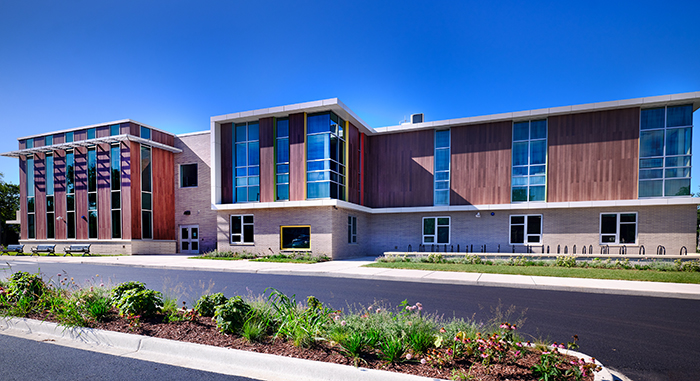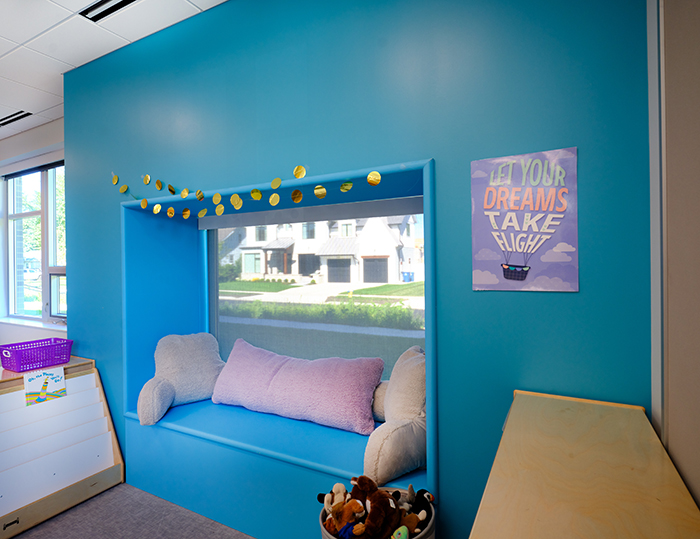Schools Using Aluminum Products to be More Inviting
Helping K-12 schools achieve inclusive, attractive, efficient results with high-performance, finished architectural aluminum products

Last year, 54,834,000 students were enrolled in U.S. K-12 schools and were taught by 3,552,000 teachers, according to the National Center for Education Statistics (NCES). More than 52 million people learn and work in 100,000 public school buildings. The right finish choices support schools in achieving their goals, budgets, schedules and long-term value.
Welcoming and inclusive
School districts serve students from diverse backgrounds and abilities. When a child feels welcomed, it not only makes a difference in their academic success, but also in their personal development.
A 2024 NCES survey found nearly 60% of public schools reported an increase in students seeking mental health services and more staff are seeking the same. Additionally, 67% of public schools face teacher vacancies; and happier teachers are easier to retain.
Colorfully finished exterior windows, entrances and cladding systems can create an upbeat, optimistic atmosphere. Pale yellows and pastels promote calming spaces that can lower stress levels. However, people perceive color differently.
Of the 7.2 million children served by the Individuals with Disabilities Education Act, 12.2% were designated as those with autism spectrum disorder (ASD) and as many as one in five students are neurodiverse. Careful consideration in color choice is needed for these students for whom intense color can be overwhelming. For those with sensory sensitivities, muted tones are preferred, such as pale blues and grays, soft pinks and purples and light earth tones.
Along with thoughtful color choices, high-performance windows and doors that provide natural light with shading control, sound mitigation and thermal comfort, also assist with optimal learning conditions for nearly every student. These attributes help reduce distractions, improve concentration and support healthy, productive learning environments.

Attractive, efficient updates
America’s main K-12 instructional buildings are 49-years-old. Nearly 60% were constructed prior to the 21st century. An NCES survey also found 21% were currently undergoing major repair, renovation or modernization work.
For renovations and retrofits, finishing providers can match colors for historic continuity. Architectural paints can be customized to a school’s unique color palette. Anodized finishes, mica and metallic coatings emphasize a high-tech, modern look.
Whether building new or modernizing a school, fenestration manufacturers offer districts an advantage when they partner with a single-source solution for both architectural finishing and energy improvement. This approach ensures a fully-warranty finished product, typically saving time and money on school projects.
K-12 school districts spend nearly $8 billion each year on energy costs, their second largest expense after teachers’ salaries. Schools’ windows and doors present a key opportunity for energy savings and are among the products most often in need of replacement, repair and maintenance.
To ensure the highest level of performance, specify AAMA 611 for Class I anodize coatings. For painted finishes, specify AAMA 2605 for 70% PVDF resin-based coatings. High-performance finished aluminum products require little maintenance and are easy to clean.
Respecting the essential service schools provide on limited budgets, high-quality, high-performance, finished architectural aluminum building products immediately contribute to efficient operations and support the facilities’ effective longevity.


